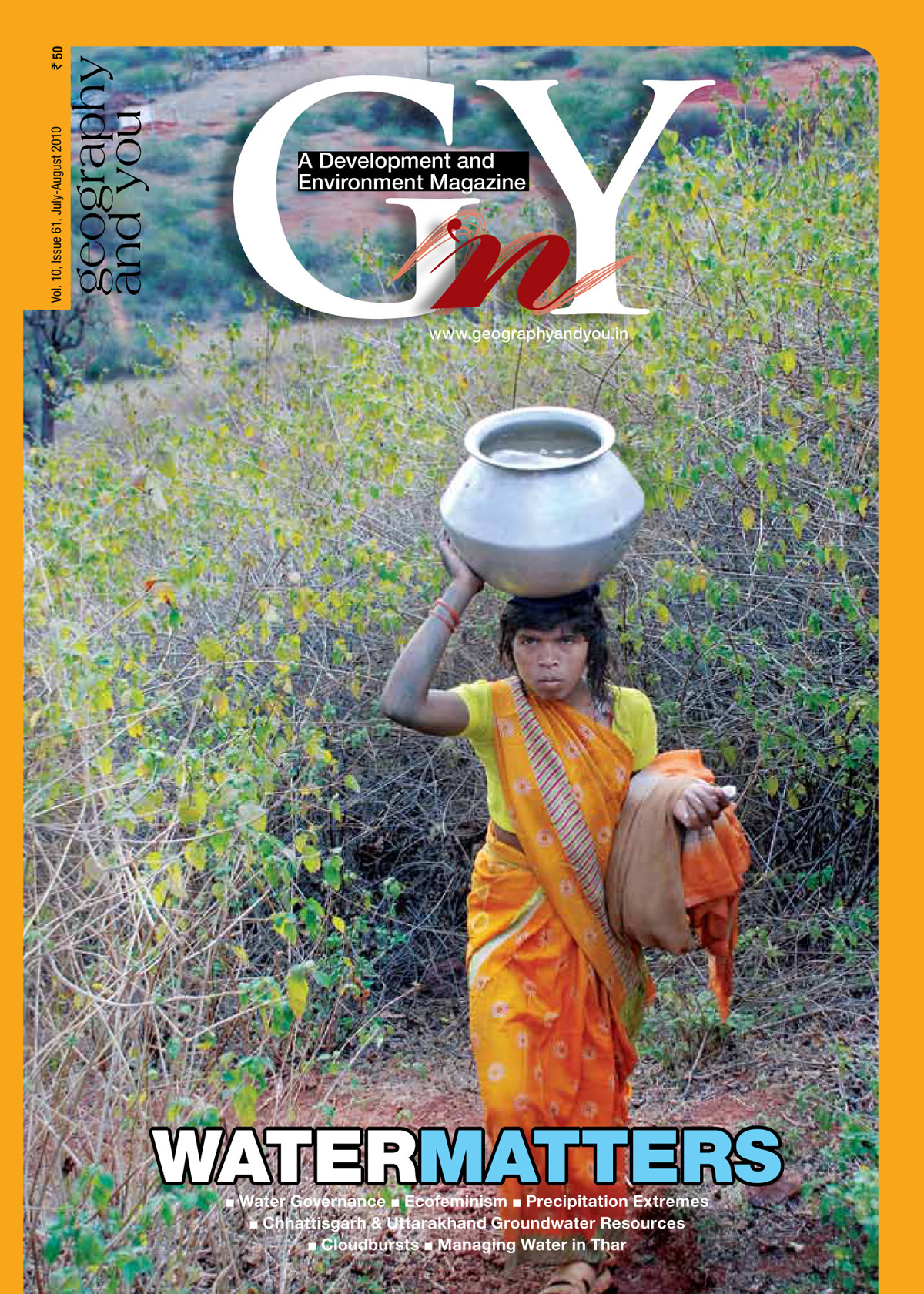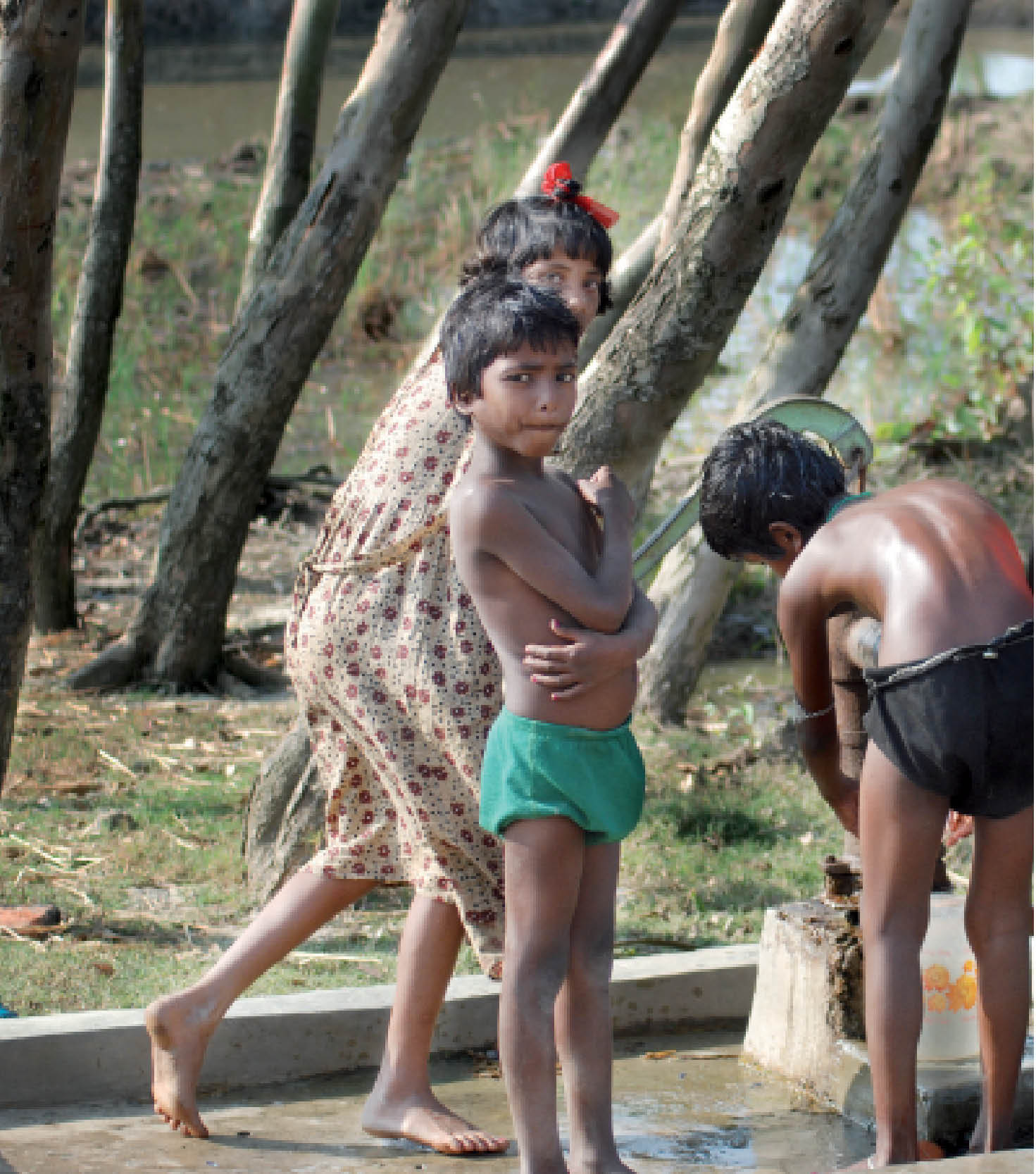
Inside this issue
Water Matters
Water is life giving. Planning for it is a collective responsibility. Panchayati Raj Institutions and the decentralized planning through active participation of community members provide some clues to effective ways of water management. Government agencies have to pitch in to provide technical and logistic support in terms of encouraging local expertise and provision of informed support and cooperation.
Several scholars have suggested that there is intrinsic affinity between women and nature and both are subordinated by patriarchal processes, women by men and nature by culture – an ideological position known as ecofeminism. Although powerfully argued, such formulation inadequately addresses division of gendered labour within households that assign tasks such as collection of water, free fodder, fuel etc. sourced essentially from natural environs by women. It is the survival dependence on nature added by persistent social conditioning that nurture and care is what they embody, make women care for nature more. Water provides a good case for suggesting an alternative way of looking at the issue in a pragmatic manner.
An update on recent happenings in the of world fresh water in the national perspective.
Cloudbursts or downpours have no strict meteorological definition. The term usually signifies a sudden, heavy fall of rain over a short period of time. A localised weather phenomena, cloudbursts leads to flash floods/ landslides, house collapse, dislocation of traffic and human casualties.
It is ironical that despite having the potential to act as a water reservoir of India by virtue of its extraordinarily dense drainage network and natural sources, Uttarakhand suffers from water shortage. Apart from ecological reasons, indiscriminate human activities such as deforestation, pollution, and competitive utilisation of water and inadequate water management are some of the problems faced by the region. Revival of traditional methods towards water conservation is needed in conjecture with judicious use of modern technologies.
The strain on Chhattisgarh’s water resources can be adjudged from the fact that there is a four fold increase in ground water draft from 1990 to 2004. In fact the stage of groundwater development has galloped from 3.31 to 20.43 per cent. It is perhaps time that we realise that water is a collective responsibility and that we all need to participate in conserving water resources in a socially equitable and ecologically sustainable manner.
It may be inferred from our study that higher moist convective instability coupled with enough moisture availability during the southwest monsoon season can increase the occurrence of deep convection. Hence the frequency of extreme rainfall events will also increase.
Despite sizeable knowledge of water conservation systems, compulsions of modern era developments have gradually turned the Thar poor so far as availability and workable traditional water harvesting systems are concerned. Sadly, it started with groundwater irrigation that turned much of the desert green.
Reports and studies
A three day National level Data Users’ Seminar for over 100 senior secondary school teachers and 50 students from Uttarakhand was held in Dehradun from 25 to 27th July 2010.
Energy environment
One of India’s contemporary concerns is to harness resources which are in sync with environmental sustainability. IndianOil operations provide a good case in point whereby judiciously thought and executed plans in terms of making business greener have led to noticeable difference to not only local environment, but have also contributed to ecological well being at large.
IN CONVERSATION WITH
Registrar General and Census Commissioner Dr C Chandramouli, in conversation with the editor affably offers insights on issues of data collection and outlines the mechanisms of providing the unique identification (UID) cards. Optimistic about the new additions, Dr Chadramouli feels that Census 2011 is poised at a momentous juncture.
In brief
An idyllic sojourn is the natural settings of the Wildlife Institute of India campus in Dehradun coupled with a short visit to the cloudy realms of Mussoorie were prefect ingredients for a memorable weekend.
In 1200 AD, the Dal’s spread covered an area of 75 sq km. By the 1980s, only 25 sq km survived, and about a decade ago the Dal stretched over barely 12 sq km.
Dear readers, It sounds very democratic to espouse that Panchayats decide amongst themselves policies towards their future - not only in terms of basic amenities but also in terms of all round development of village resources. One wonders what all these trained, highly professional bureaucrats who

